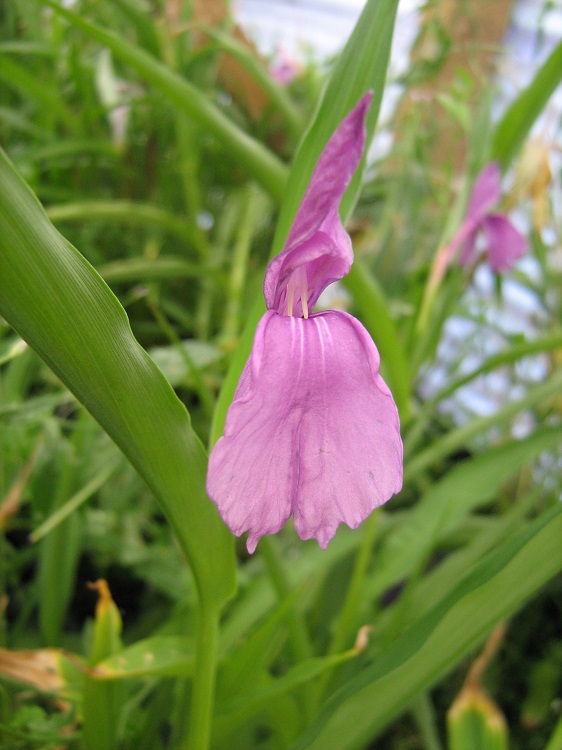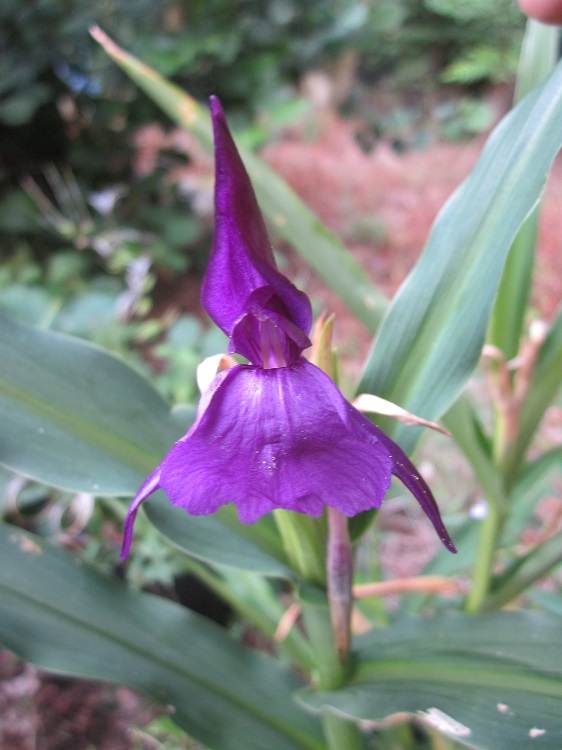 |
Roscoea brandisii is probably not in cultivation, but this plant is circulating under the name
, and is actually R.tumjensis. It is an excellent large flowered plant, but probably best grown
in a pot and put under cover for the winter. It does not really like being wet when it is dormant.
I have only killed it once, but it was an experience to learn from. It was very late to emerge, but
Roscoea are always late to emerge, so it was the end of june before I knocked it out of its pot
to see what was happening, by which time the rot had destroyed all of the storage roots. Jill Cowley said: "When it was collected by the Oxford University Ganesh Himal expedition (Baker, Burkitt, Miller & Shrestha) in 1992, it was tentatively identified as R. purpurea... When the team members saw this species in the wild, they described the flowers as occurring in "as excellent array of colour forms, most notably, an intense inky purple swarm". According to the data accompanying the plants which were brought into cultivation, they had "large, very dark purple flowers" and the habitat was described as being a "dangerously precipitous, open grassy slope on the edge of mixed (mostly Rhododendron) woodland"... A character that shows clearly in cultivated plants but which is difficult to see in herbarium collections, is the long corolla tube which when exserted makes the flower nod, " Gary Dunlop says: "Seed thought to be that of Roscoea auriculata, brought back by Bill Baker in 1992, under number BBMS.15, turned out to be the first introduction of this uncommon species. A second and subsequent introduction was made by Edward Needham, from the Dudh Kosi valley in Nepal and is illustrated in the AGS Bulletin (Vol.70 Part.2 (2002)). It was first introduced into commerce under the incorret name of R. brandesii 'Purple Giant' by a Dutch grower who had obtained some tubers of it mixed in with some R. purpurea which were wild collected by an Indian supplier. The date of this introduction is not known, so it could be the first introduction. A living specimen was donated to Kew in 1997. Stock was released commercially by Dr. Paul Christian. It flowers from July into September and clumps up slowly." I find it compact growing and floriferous, but a little reluctant to set much viable seed, though whether this is true in general, or just for the inbred stocks in cultivation (or due to my incompetence?) I do not know. |
|
| 1st August 2005 | ||




